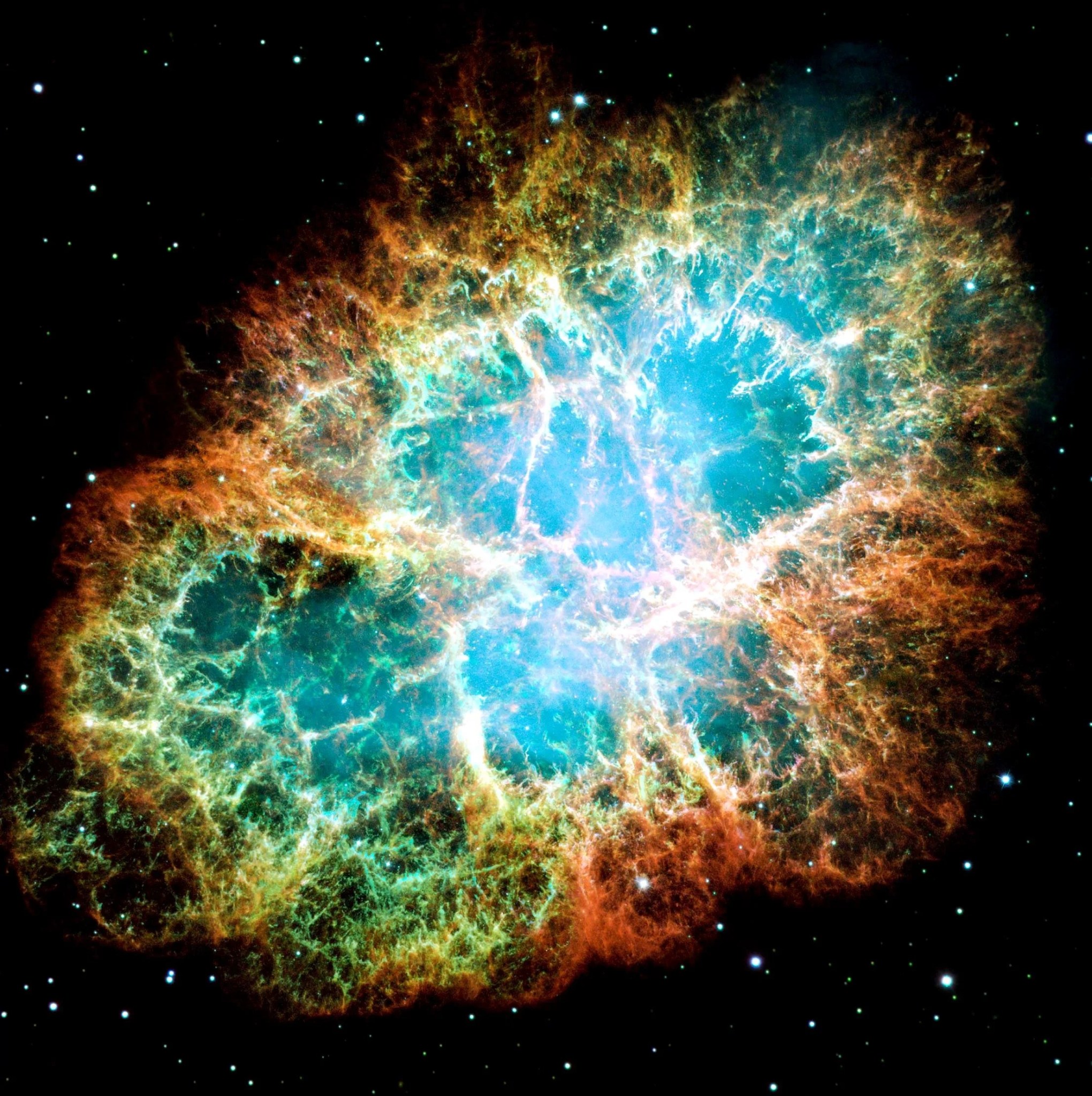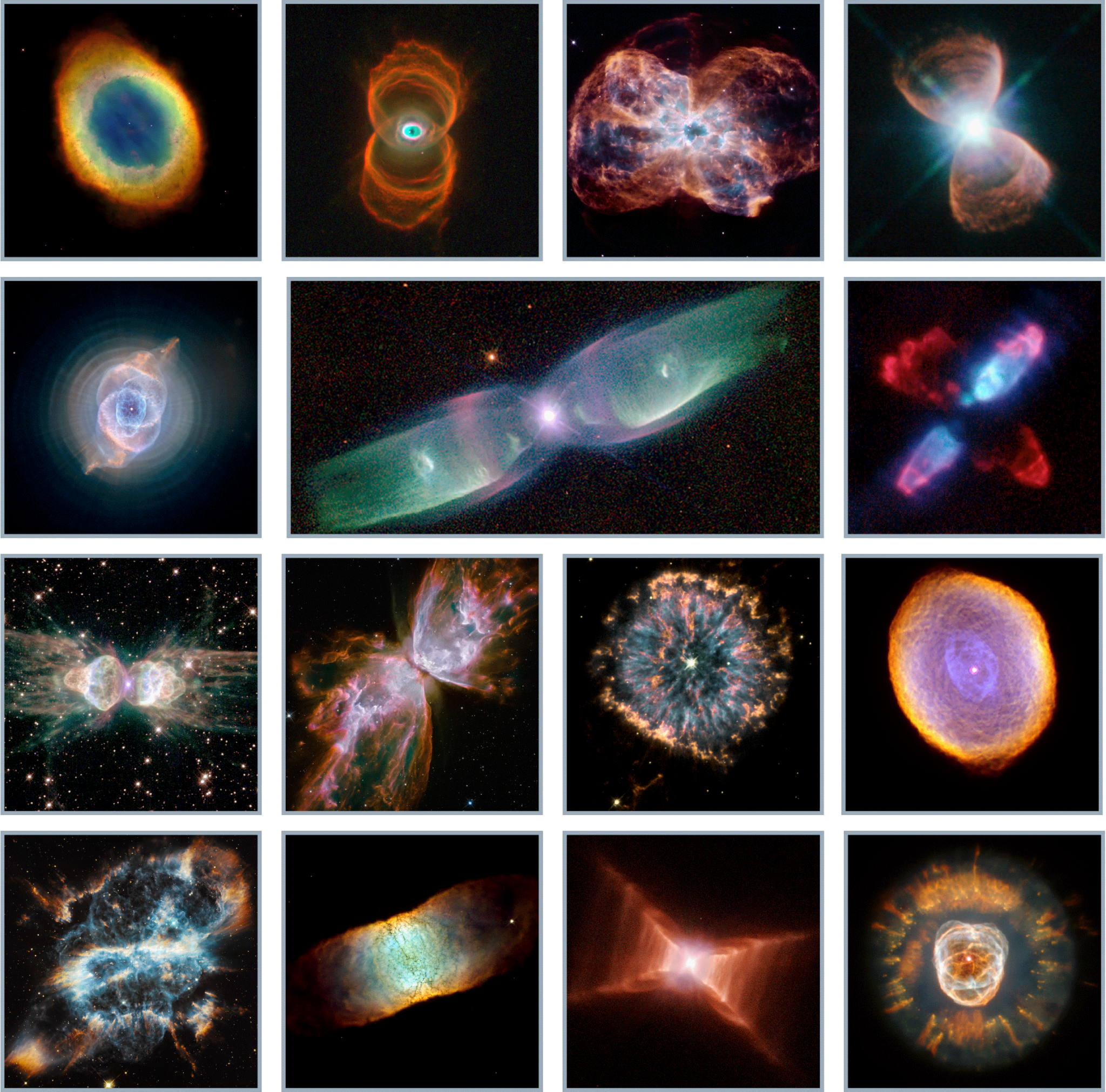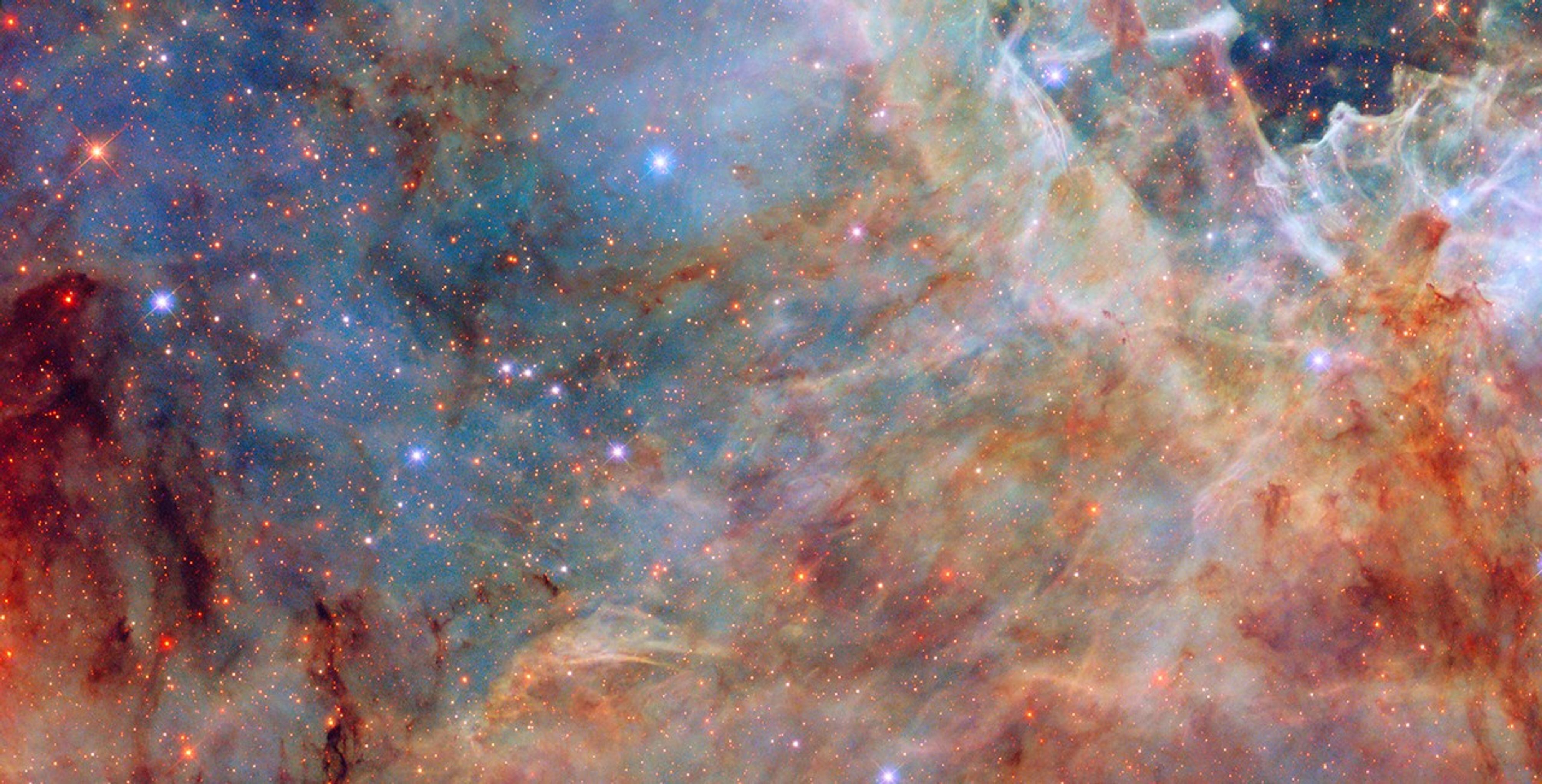When a star runs out of its hydrogen fuel, the path it takes toward death depends on its size. For stars, it’s a balance between the radiation pressure of their fuel-burning cores pushing outward, and their gravity pulling inward. When stars run out of fuel, gravity wins this struggle, and the star begins to collapse into black hole, neutron star, or white dwarf depending on its size.
-
The Crab Nebula
The Crab Nebula is the result of a massive star's collapsing core that ignited an uncontrolled explosion called a supernova. That explosion was visible during daylight hours on Earth in 1054 CE. The faint remnant we see today is an expanding shell of gas and dust aided by an outflowing wind from a rapidly spinning, highly magnetized neutron star called a pulsar.
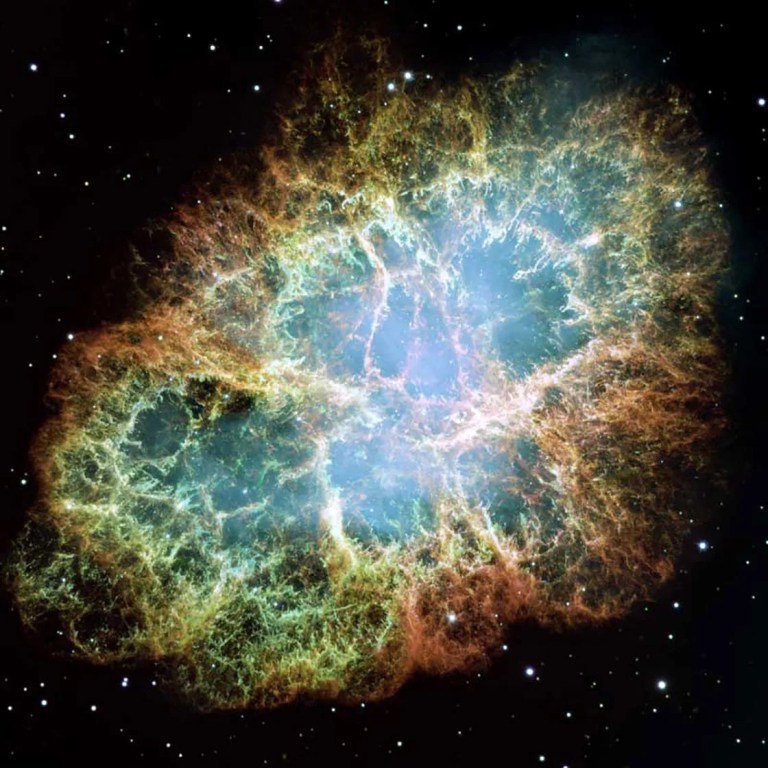 The Crab NebulaNASA, ESA, J. Hester and A. Loll (Arizona State University)
The Crab NebulaNASA, ESA, J. Hester and A. Loll (Arizona State University) -
Eta Carinae
Eta Carinae is another doomed star that will also end its life in a supernova explosion. A regular target for Hubble since its 1990 launch, Eta Carinae is a system with at least two stars. The largest and brightest is an enormous supergiant star about 100 times the mass of the Sun and five million times brighter. This ultraviolet image from Hubble’s Wide Field Camera 3 revealed new areas of magnesium embedded in warm gas (blue). The glowing magnesium dwells between the dusty bipolar bubbles and the outer shock-heated, nitrogen-rich filaments (red). The two lobes likely formed during an outburst the star had in the early 1800s.
NASA Observatories Take an Unprecedented Look into Superstar Eta Carinae
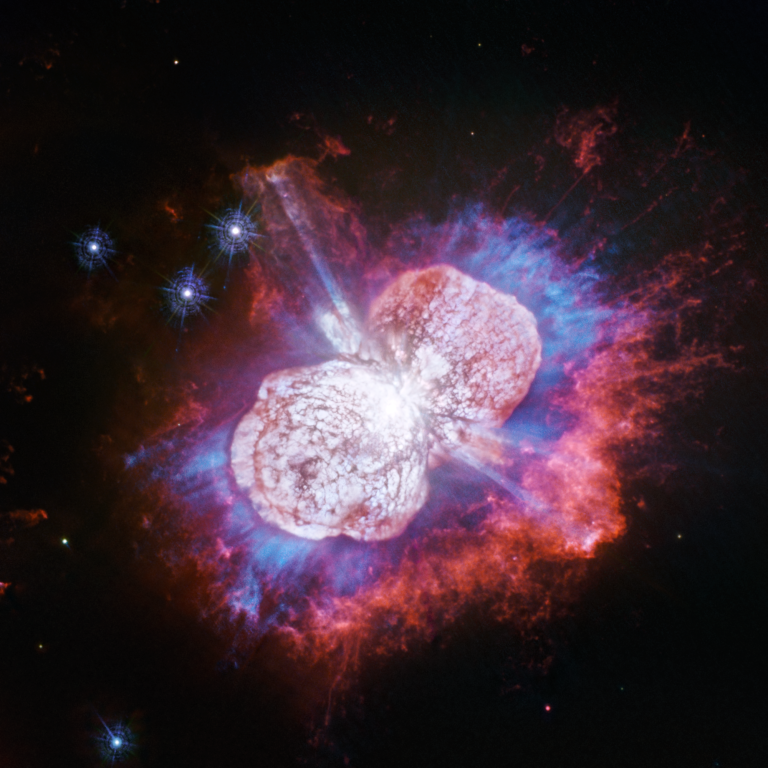 Eta CarinaeNASA, ESA, N. Smith (University of Arizona) and J. Morse (BoldlyGo Institute)
Eta CarinaeNASA, ESA, N. Smith (University of Arizona) and J. Morse (BoldlyGo Institute) -
Planetary Nebulae
When a medium-sized star begins to die, it sheds its outer layers, forming a shell of gas and dust called a “planetary nebula.” Before Hubble, ground-based images suggested that planetary nebulae have simple, spherical shapes. Hubble observations revealed unprecedented details that show they are much more varied and complex. These images offer insights into the complex dynamics that accompany a star’s release of its outer gaseous layers before it collapses to form a white dwarf or neutron star.
Hubble Celebrates 34th Anniversary with a Look at the Little Dumbbell Nebula
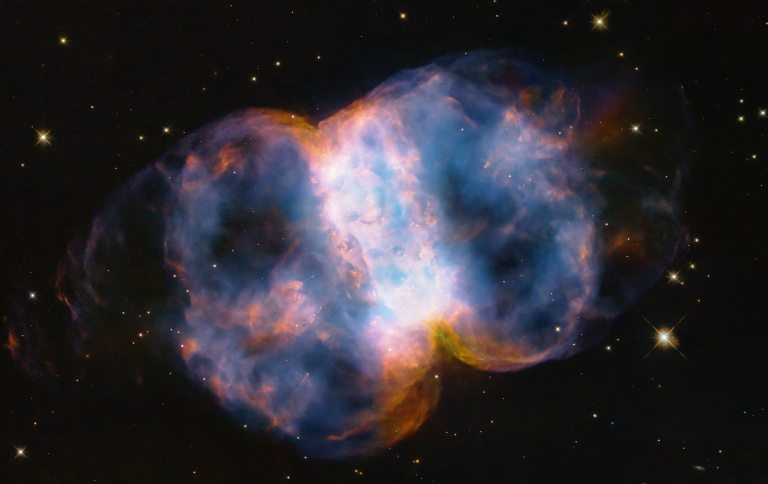 The Little Dumbbell Nebula, also known as Messier 76, or M76, located 3,400 light-years away in the northern circumpolar constellation Perseus.NASA, ESA, STScI
The Little Dumbbell Nebula, also known as Messier 76, or M76, located 3,400 light-years away in the northern circumpolar constellation Perseus.NASA, ESA, STScI
Learn More
Hubble Science Highlights
Discover the breadth and depth of Hubble's exciting discoveries!
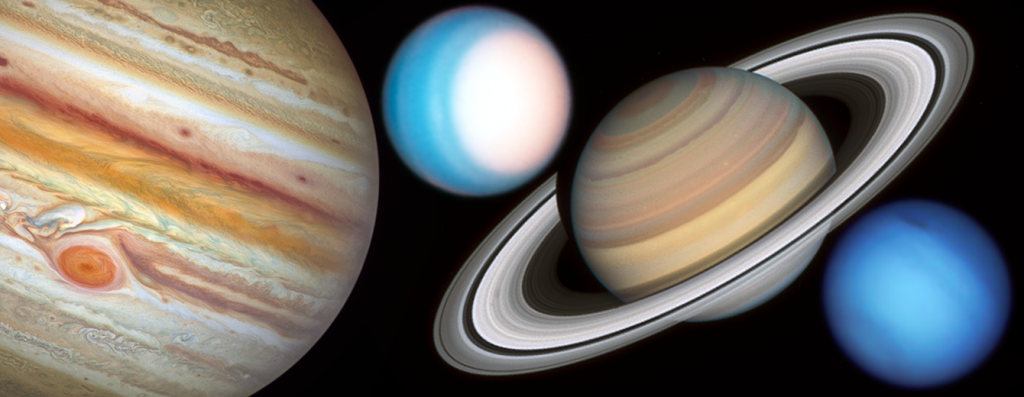
Studying the Planets and Moons
Hubble’s systematic observations chart the ever-changing environments of our solar system's planets and their moons.
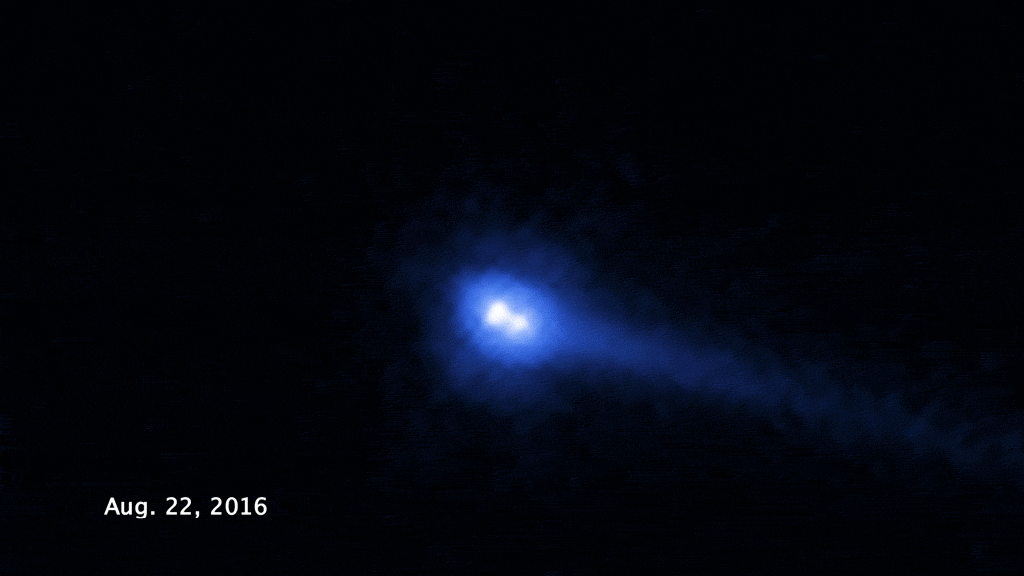
Tracking Evolution in the Asteroid Belt
These conglomerates of rock and ice may hold clues to the early solar system.
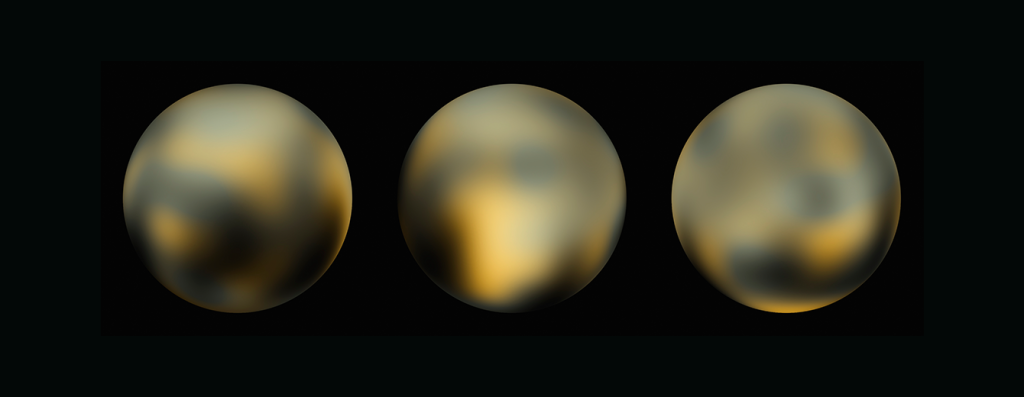
Uncovering Icy Objects in the Kuiper Belt
Hubble’s discoveries helped NASA plan the New Horizon spacecraft’s flyby of Pluto and beyond.
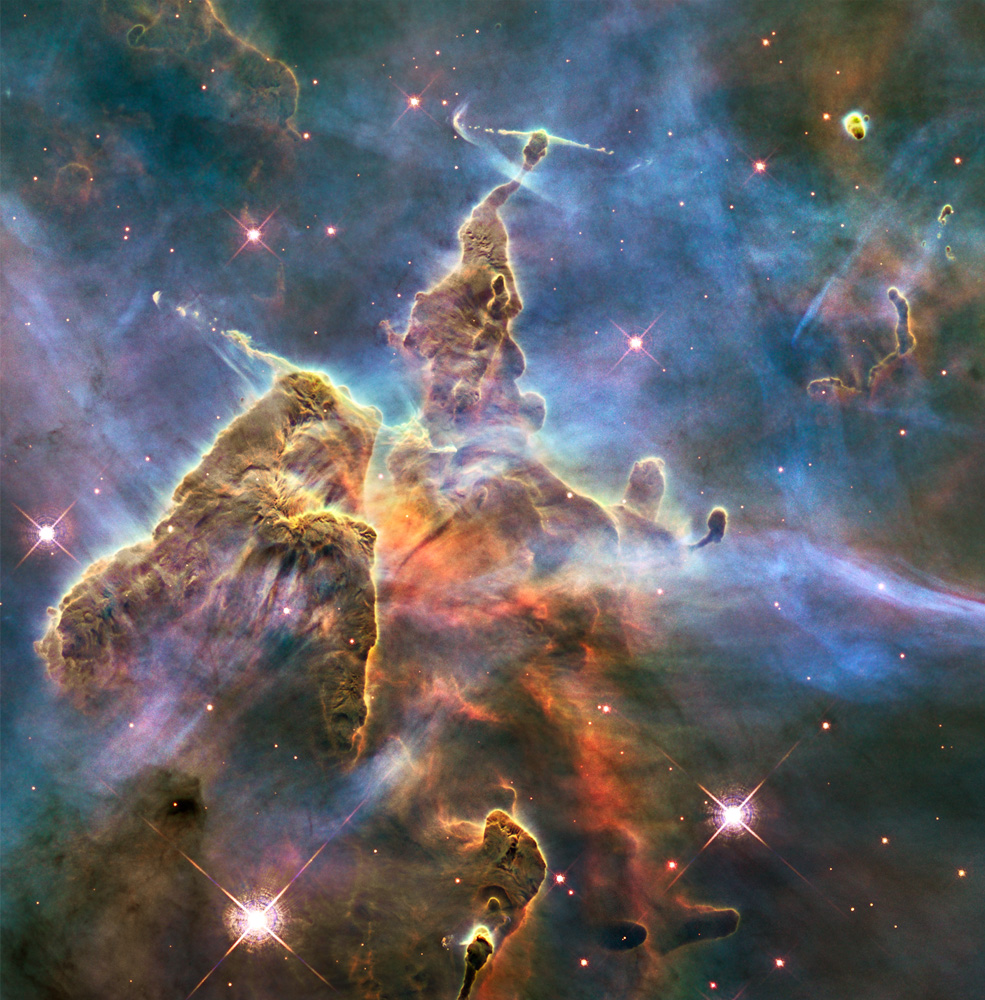
Exploring the Birth of Stars
Seeing ultraviolet, visible, and near-infrared light helps Hubble uncover the mysteries of star formation.
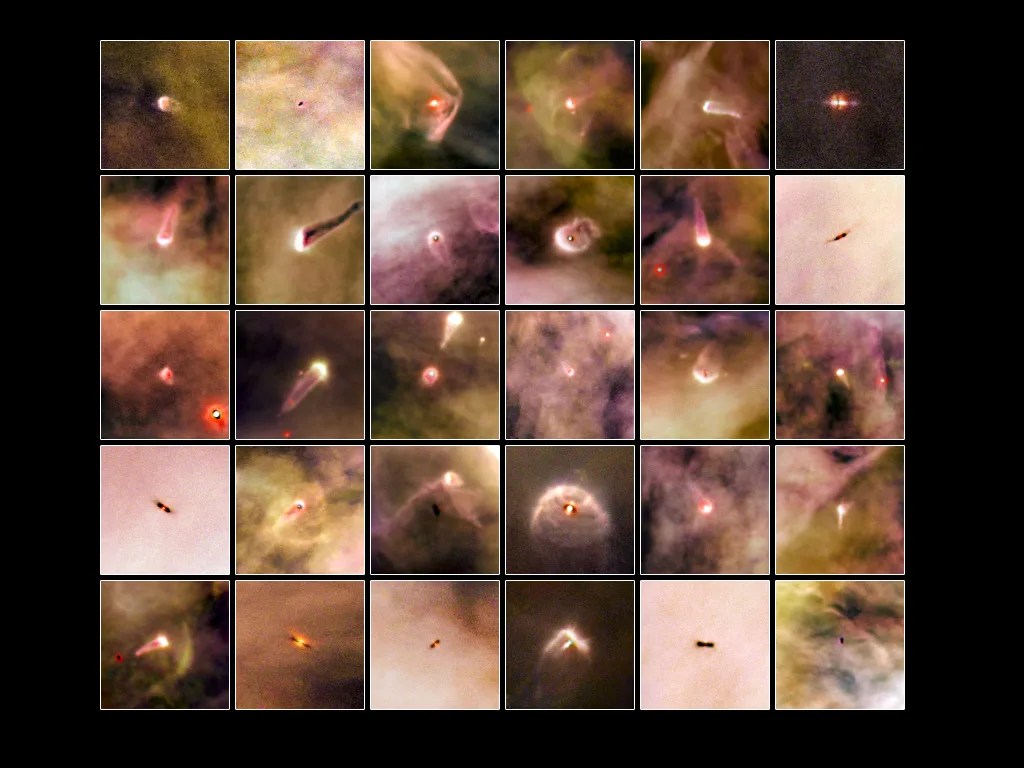
Finding Planetary Construction Zones
Hubble’s sensitivity uncovers the seeds of planets in enormous disks of gas and dust around stars.
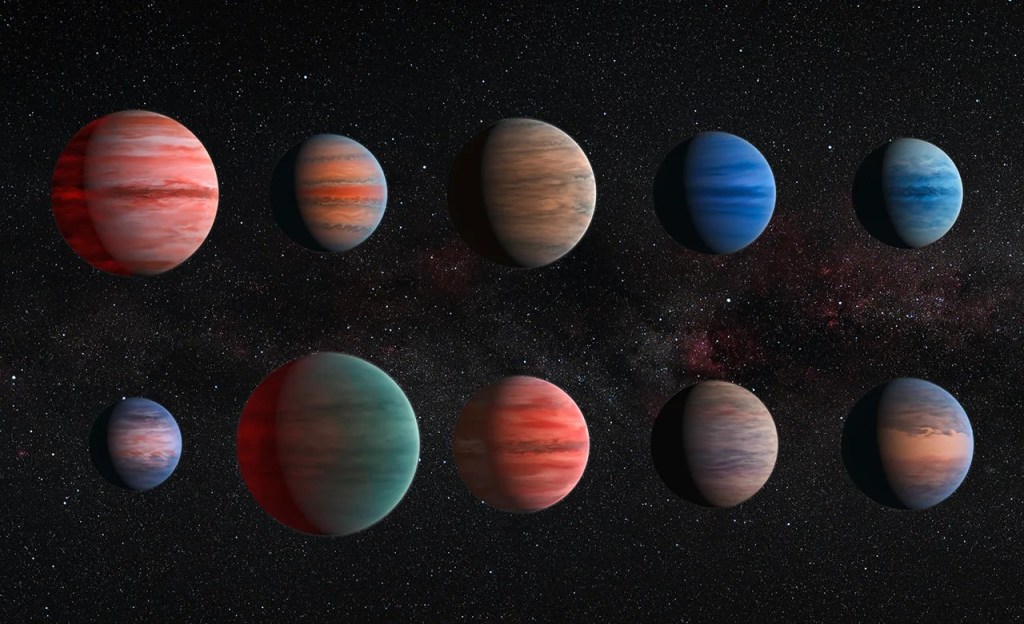
Recognizing Worlds Beyond Our Sun
Hubble can detect and measure the basic organic components for life on planets orbiting other stars
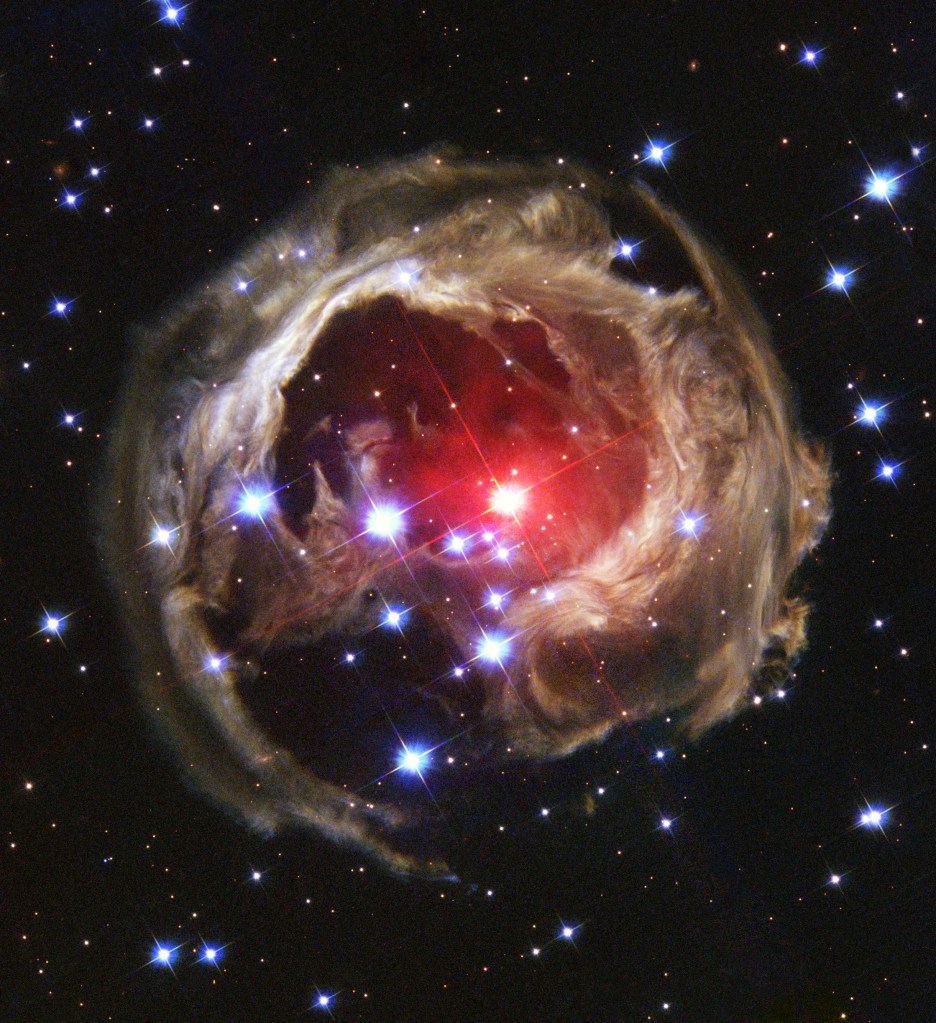
Seeing Light Echoes
Like ripples on a pond, pulses of light reverberate through cosmic clouds forming echoes of light.
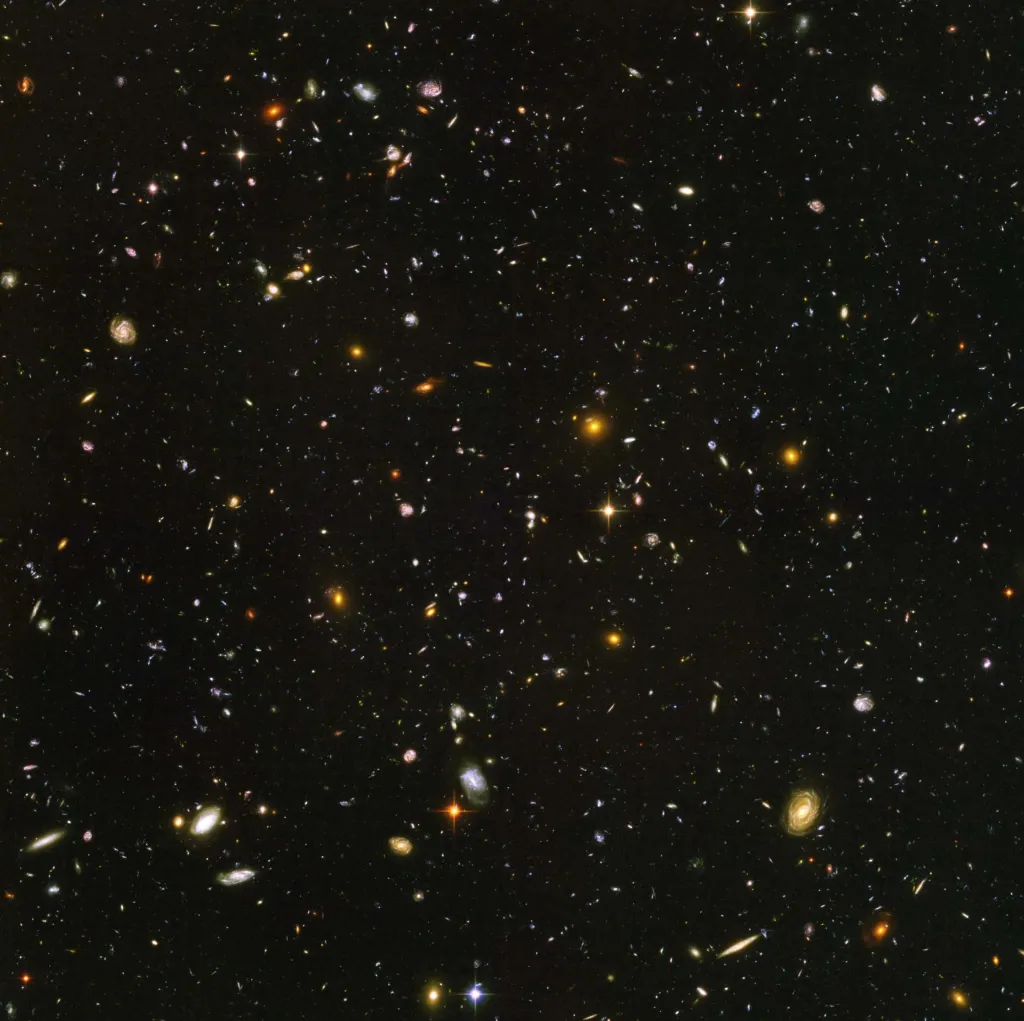
Tracing the Growth of Galaxies
Hubble's Deep Field observations are instrumental in tracing the growth of galaxies.
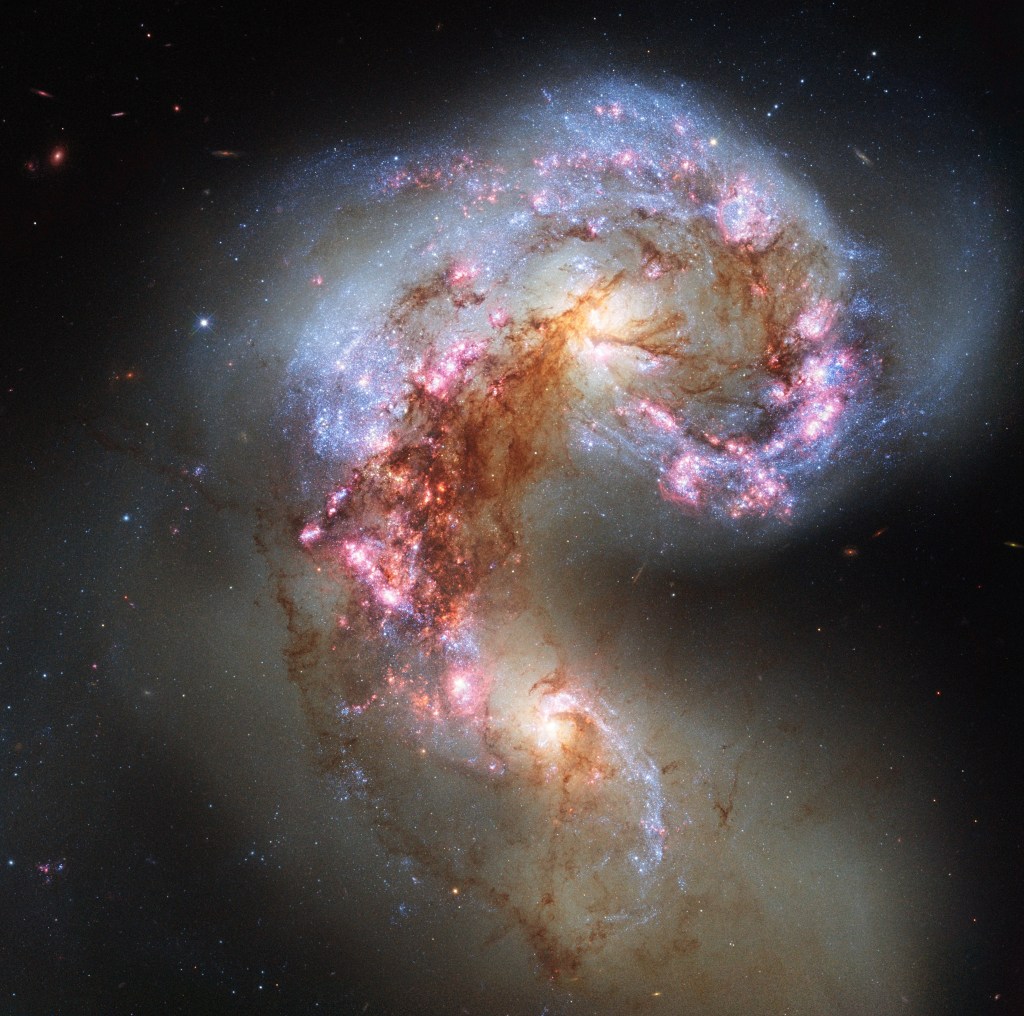
Galaxy Details and Mergers
Galaxies evolve through gravitational interaction with their neighbors, creating a menagerie of forms.
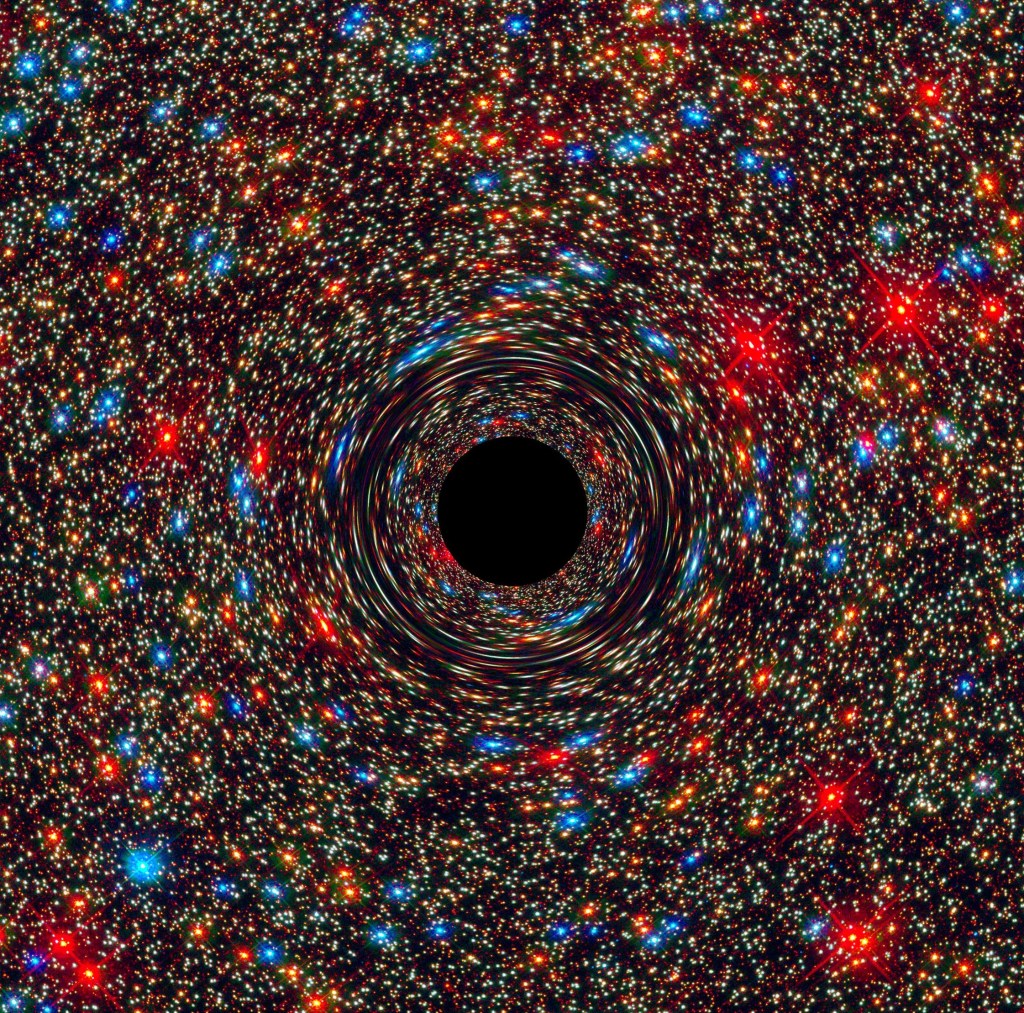
Monster Black Holes are Everywhere
Supermassive black holes lie at the heart of nearly every galaxy.
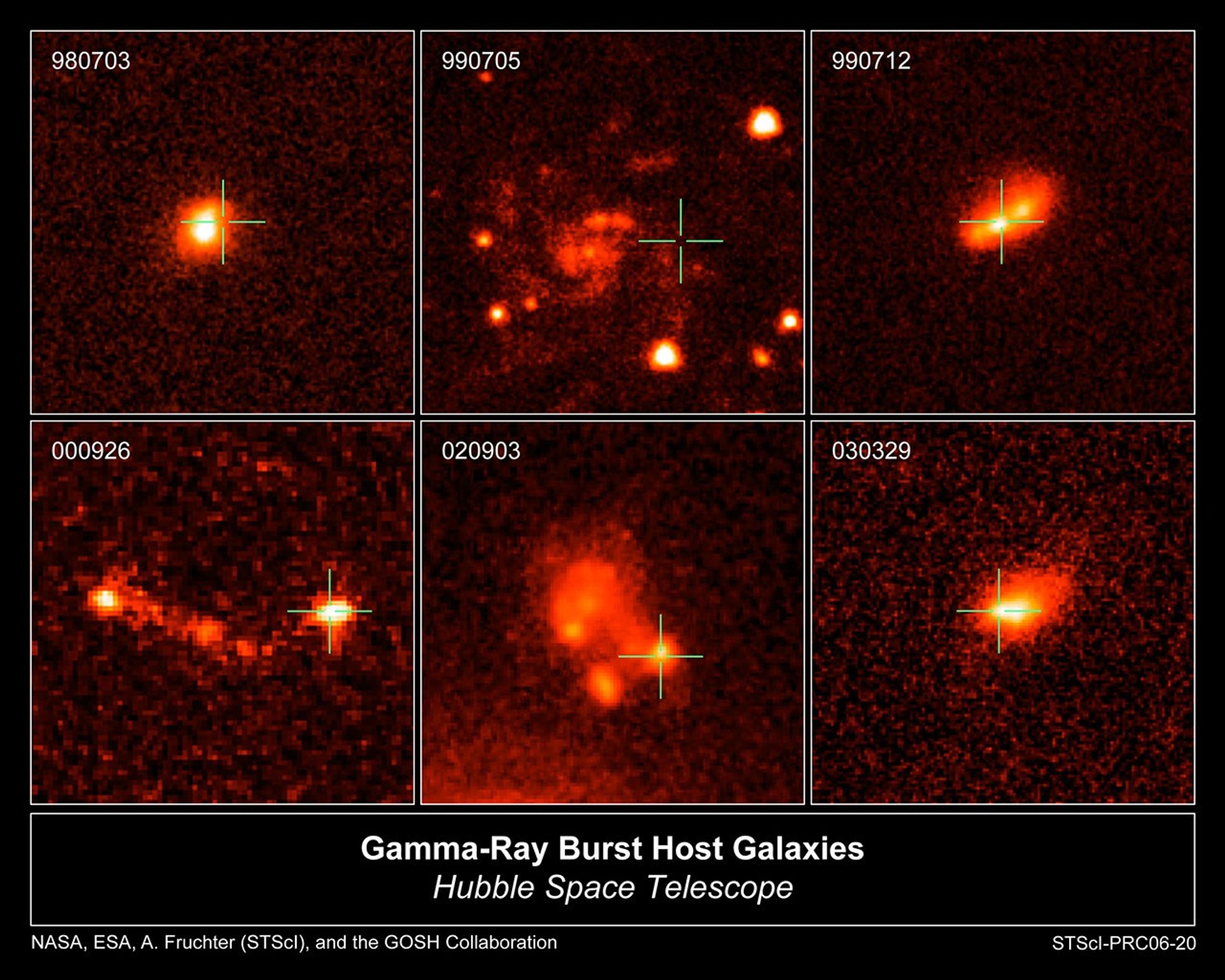
Homing in on Cosmic Explosions
Hubble helps astronomers better understand and define some of the largest explosions in the universe.
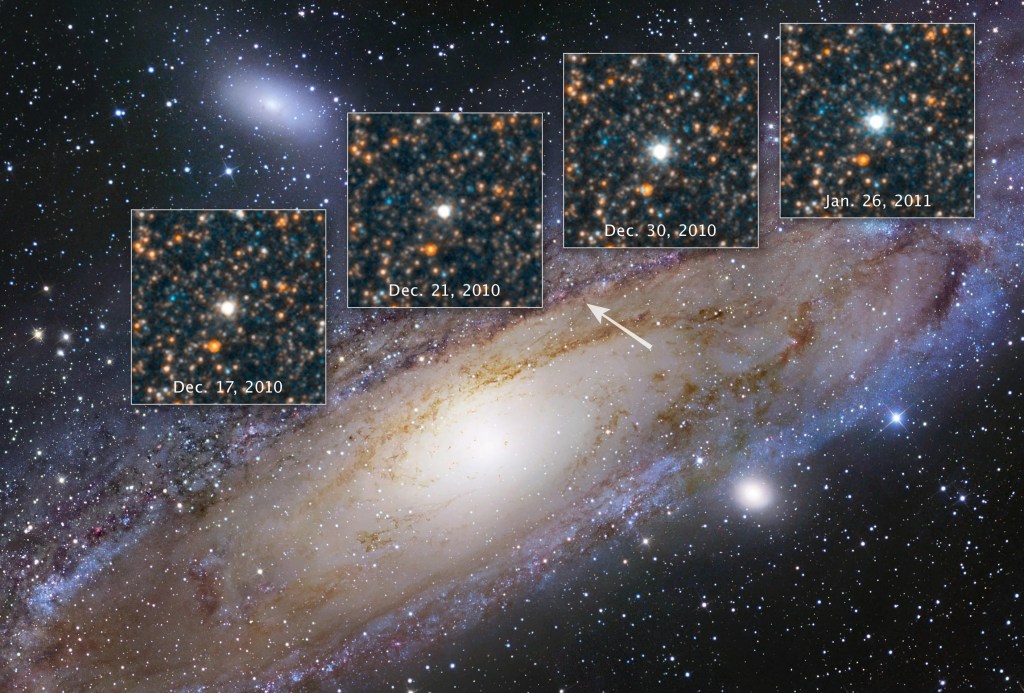
Discovering the Runaway Universe
Our cosmos is growing, and that expansion rate is accelerating.
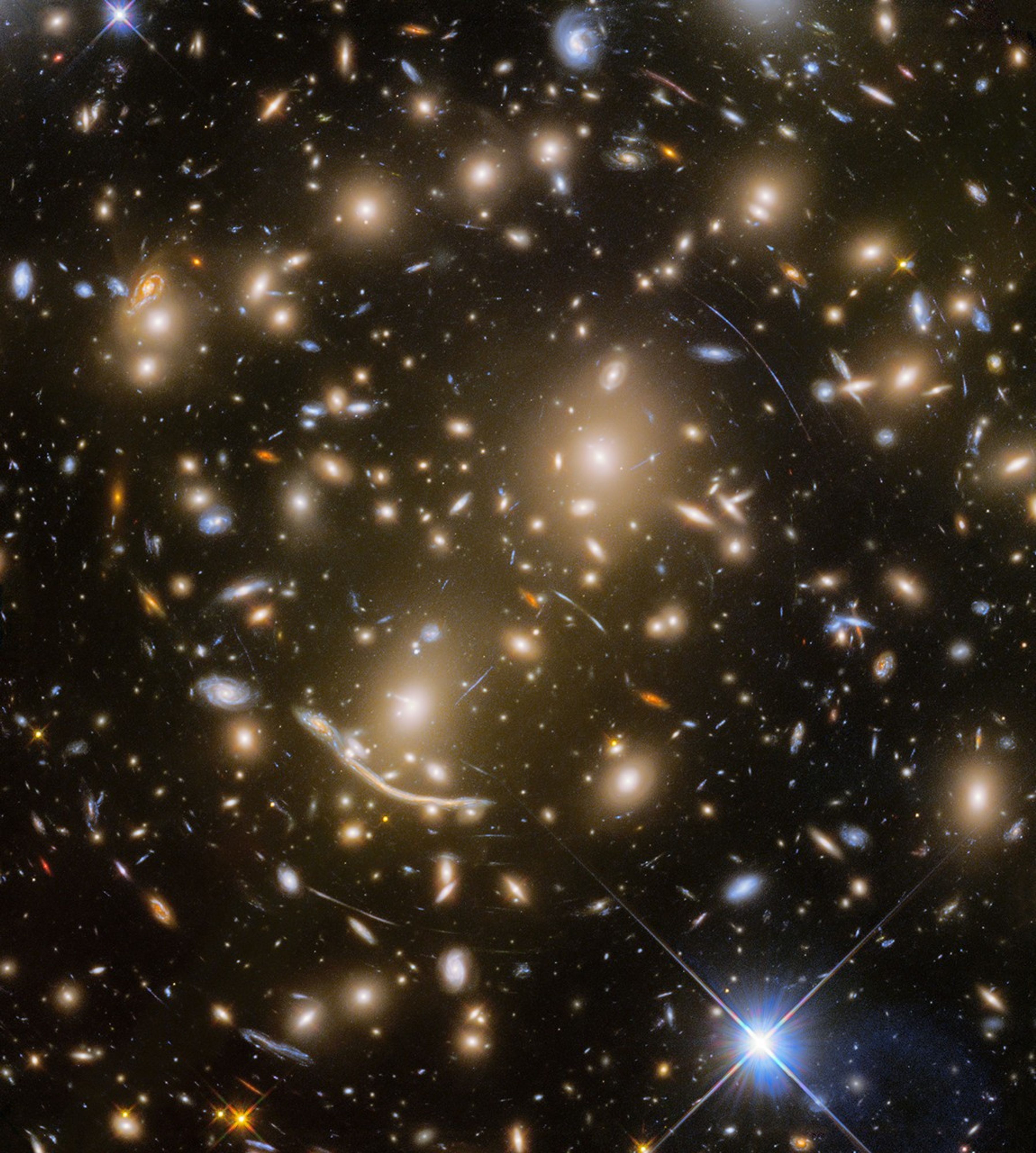
Focusing in on Gravitational Lenses
Gravitational lenses are 'Nature's Boost', expanding our view deeper into space and farther back in time.
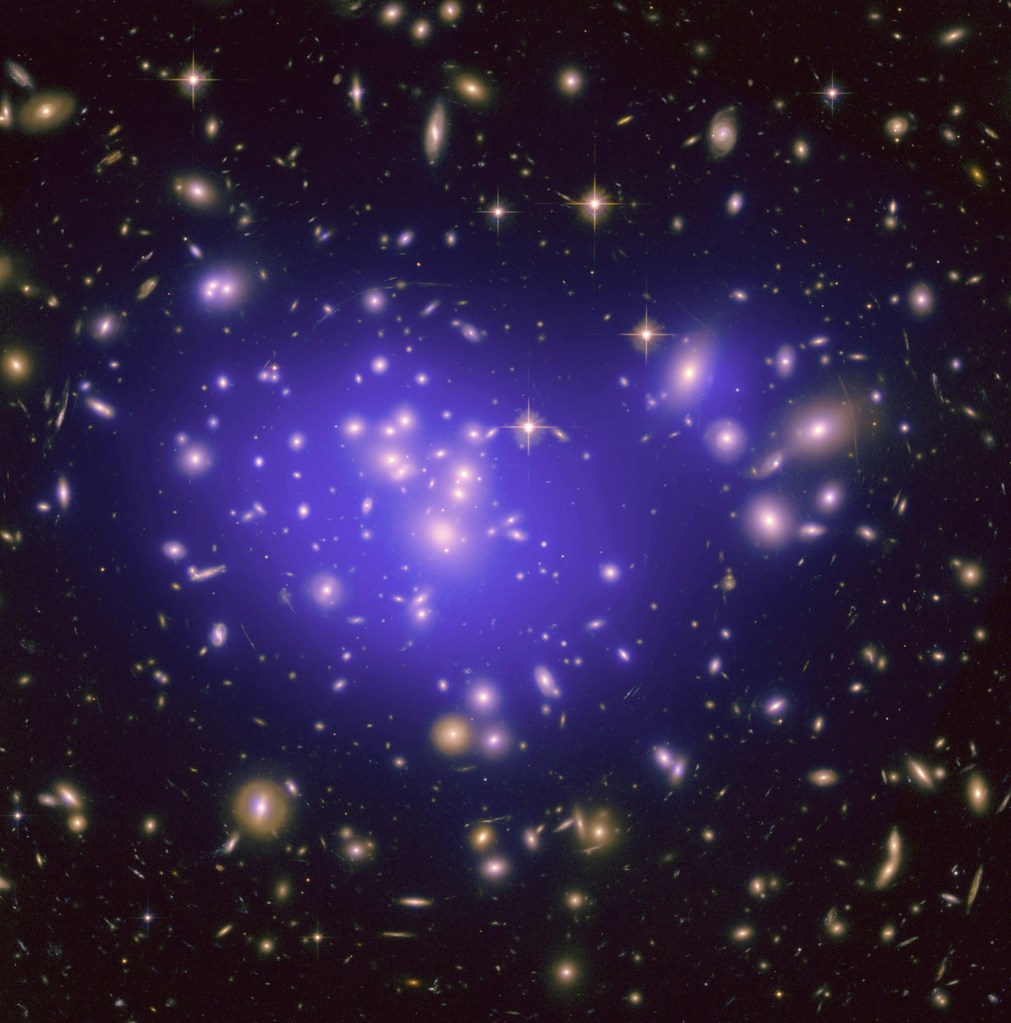
Shining a Light on Dark Matter
The gravitational pull of dark matter guides the formation of everything we can see in the universe.

Mapping the Cosmic Web
Filaments and sheets of matter create an interconnected web that forms the large-scale structure of the universe.































